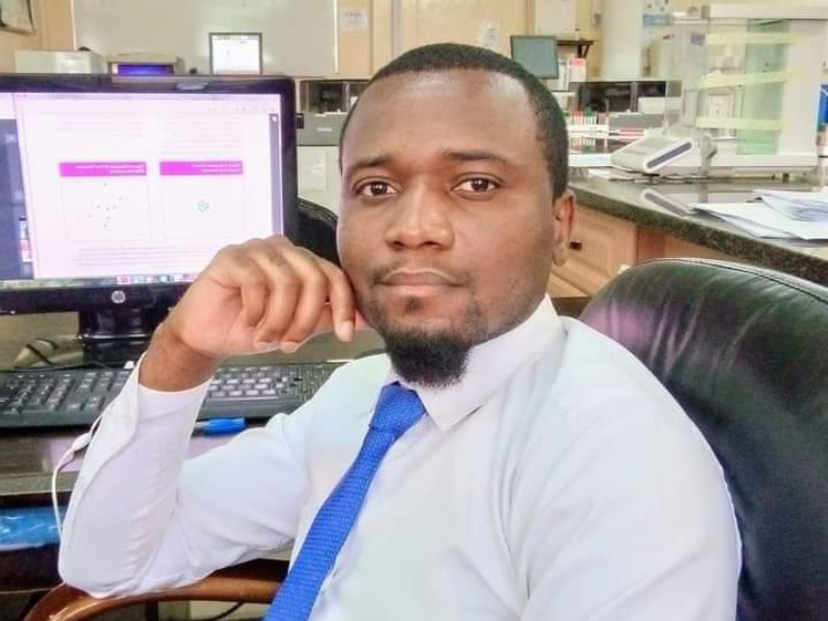24 hours in the life of a Biomedical Scientist in Zambia
1 Nov 2024
Edgar Muchinta works for the Ministry of Health, National Heart Hospital, Laboratory Department, Lusaka, Zambia
In this guest blog, Edgar Muchinta describes his role as a Biomedical Scientist working for the National Heart Hospital, Laboratory Department, Lusaka, Zambia. Learn more about his daily responsibilities and challenges to ensure continuity of patient care and operational efficiency. Plus find out how technology is helping him to streamline workflows and improve patient care, while government support drives innovation to overcome healthcare challenges.
About my job as a Biomedical Scientist in Zambia
I’m a Biomedical Scientist working for the Government of Zambia under the Ministry of Health. My workstation is the National Heart Hospital, Laboratory Department, in the capital city of Lusaka. As Deputy Lab Manager and Section Head for the Clinical Chemistry Laboratory, my operational post roles include leadership and strategic planning, operational oversight, personnel management, collaboration and communication, quality assurance and compliance innovation, and continuous improvement.
A typical day for me as a Biomedical Scientist in Zambia
Each day begins promptly at 07:40 with a virtual morning brief. During this meeting, the night superintendent provides a comprehensive report, covering any significant events or developments from the previous night. It’s also the time when matters arising are discussed collaboratively. This meeting sets the tone for the day, ensuring that everyone is informed and aligned.
Upon arriving at the facility, I receive a handover from the technical staff who were on night duty. This exchange ensures continuity of care and seamless transitions. I pay close attention to any critical information related to ongoing tests, patient cases, or equipment status.
One of my initial tasks involves verifying temperature monitoring and quality control procedures. I physically check the relevant areas and documentation. Ensuring that these essential processes are completed accurately contributes to reliable results and patient safety.
I meticulously review the quality control data. My goal is to confirm that all QC samples have passed within acceptable limits.
Our equipment is the backbone of our operations. I routinely assess the status of all instruments and devices. If any errors or malfunctions are detected, I make sure that immediate action is taken to rectify them, minimizing downtime.
Collaboration with other sections is crucial. I reach out to the heads of different laboratory sections to inquire about reagents’ stock levels. If there are any shortages or issues, I work proactively to have them address, ensuring uninterrupted testing capabilities.
Biggest challenges as a Biomedical Scientist in Zambia
Understaffing, resource constraints, and procurement struggles are the biggest challenges I face. Each day, I grapple with the impact of understaffing and limited resources. Our team works tirelessly to meet the ever-growing demand for laboratory services. Despite these challenges, we remain committed to patient care and accurate diagnostics. The procurement of laboratory commodities poses a significant hurdle. Many essential reagents and consumables are not locally manufactured, necessitating international sourcing.
The catch? These items are often quoted in foreign currency (usually Dollars), while our budget allocations are in our local currency.
How technology supports my work
In the dynamic world of healthcare, technology serves as an invaluable ally, addressing critical challenges head-on. In my lab, technology bridges gaps created by staffing shortages. Through process and testing automation, we've optimized efficiency. Manual testing methods, once a source of endless challenges, are now seamlessly executed by smart systems, freeing up valuable time for my skilled team.
One of the most effective technologies our lab has invested in is the Laboratory Information Management System (LIMS), which acts as a reliable assistant. By implementing DISA LIMS, we have eliminated manual data entry and paperwork. This system has streamlined our workflows, ensuring consistency and accuracy from sample tracking to quality control, making data retrieval and analysis effortless. Thanks to DISA LIMS, lab results are now accessible at various points within the hospital, enabling clinicians to make prompt decisions in patient management and intervention.
Point of Care (POC) machines are another breakthrough, bringing diagnostics closer to patients by allowing tests right at the bedside. This minimizes wait times, enabling clinicians to make swift decisions that lead to better outcomes.
During procedures such as open-heart surgeries and catheterization, POC machines like the i-STAT and i-Smart have been invaluable to surgical and nursing staff. Real-time data guides interventions, significantly improving patient safety.
Thanks to the Government of Zambia, specifically the Ministry of Health and their supporting partners, innovation has been fueled through their efforts. Their funding and endorsement have empowered our lab to explore cutting-edge solutions, strengthening our resilience and enabling us to overcome challenges.
